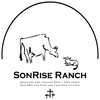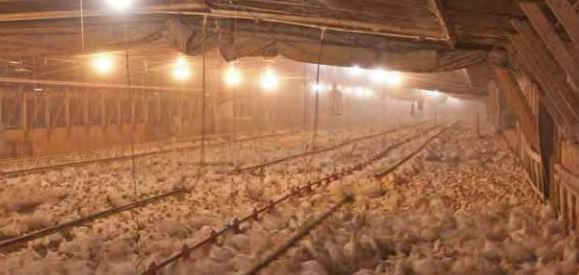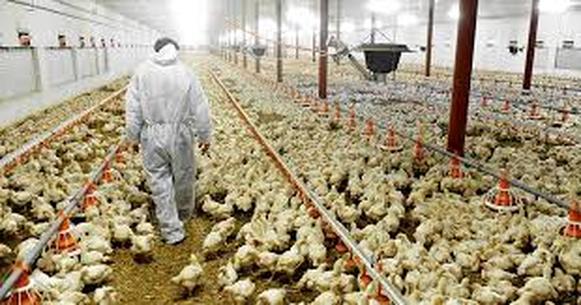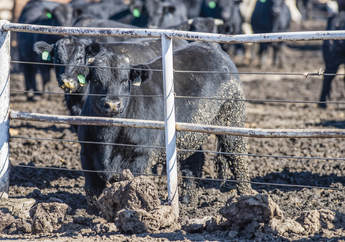In 1787 a woman asked Benjamin Franklin as he was exiting the Constitutional Convention, “Well, Doctor, what type of Government have we - a Republic or Monarchy?"
His response, was both direct and prophetic “A Republic, if you can keep it”
And, with this season comes a peppering of “what say you” emails and inquires to our Ranch, regarding, policy, procedures and methods. As such, we do appreciate the confidence you have in asking our opinion, but I must warn you now, if you continue reading, all bets are off. We are sure to disappoint, at least, everyone, once.
So here it goes… (Turn back now if you like me and wish to continue holding my opinion in high esteem). As my Pops once said “you can please some of the people all of the time, but not all of the people some of the time”
Of course, most are asking what is the deal with Proposition 12 – the one that is supposedly designed to “stop animal cruelty”– yeah right, that will surely be the result.
In detail, here is how this will go down. Most folks will vote “yes” because it makes them feel good. Just like buying a package of meat that says “grass-fed”, from Sprouts will make them feel good. The Truth - It’s not real grass fed, and the Semi-truck backing up to the rear of the building, unloading pallets of factory Beef, all labeled “grass-fed” should be your first indicator.
Or, one of my favorites (or not) is the “cage free” label. Meaning that, according to law that… "an indoor or outdoor controlled environment for egg-laying hens within which hens are free to roam unrestricted; are provided enrichments that allow them to exhibit natural behaviors, including, at a minimum, scratch areas, perches, nest boxes, and dust bathing areas; and within which farm employees can provide care while standing within the hens’"
Now, does that sound like this…
Here’s another thought for you – any idea why, if measure 8 was so effective, are we are voting again on this issue? Yep, you guessed it – because the CAFO industrialists always circumvent the rules. In other words, it didn't work.
In Fact, in this latest measure (Prop 12) you will notice that the required space for a laying hen is no “less than 144 square inches of usable floor space per hen”. This is totally unreasonable! No hen can live healthy in that amount of space – no matter what the cute drawing on the egg carton depicts!
They need acres, not inches.
So, you will soon see massive, factory hen CAFOs in California with 144.01 inches of floor space for each hen – and it will all be legal.
So, what is the answer?
Simple – Vote
Just not with a punch card. Instead, use a dollar.
That’s right. Stop taking meaningless action that only results in increased pay for Lawyers working for industrial farms splitting hairs on one-tenth of an inch measurement for a hen CAFO and start hitting them where it hurts.
Take your voting dollar away from them and give it to an integrity food farmer. Stop buying at the supermarket. It doesn’t have to be us, in fact, we don’t currently offer eggs. But, you could frequent a Farmers Market where eggs are sold and support a hard working farmer with your voting dollar. (Pastured eggs are very common by the way) Just be sure to ask all the right questions. Yes, it will require more effort than just voting once every few years, but, at least it will be rewarding and effective. Plus, the Farmer will really appreciate it!
Here are three general guidelines you should look for…
- Look
In beef, this means yellow fat – indicating the presence of beta carotene. This means the beef is truly grass fed, as the beta carotene color (the same element that makes a carrot orange) can only come from a cow eating grass. If it is eggs you are looking for, look for orange yolks. This will indicate pasturing.
- Ask
Ask about the methods? Be specific. Say things like “Does this chicken’s feet touch green grass every day?” That’s pretty specific. Notice, I did not use any of the most popular catch phrases like “Free-Range”, “Pastured”, “Outdoors” etc. This is because almost all of these terms are adulterated by the industry. Another tip - if he or she doesn't answer your question with a single phrase, but excitedly explains, in detail, the sheer ecstasy of his or her latest pastured farming methods for 30 minutes, and you leave with enough information to start a small farm, your on the right track!
- Think
Is your Farmer ever out of stock? Does he or she ever struggle with seasonality? Farming is biological, not mechanical. There are rain storms and droughts, ups and downs, predators and prey. All this effects supply. One of the primary reasons Henry Ford invented the assembly line factory, was to get a uniform product with predictability and consistency. By nature, this cannot (or should not) happen in true, biological farming.
I got a call a few weeks ago from a patron of another farming operation. She told me that she believed that her Farmer was buying factory meat and selling it at the Farmers Markets as their own product. I asked her why she would think such a thing. Her answer was telling…”They always have what I want, and in plenty. Plus they attend over twenty Farmers Markets and only farm a few acres” – I told her to trust her instincts and find a different supplier. It’s this kind of thinking that will help steer you in the right direction. Trust your gut – there are shysters out there, even at the Farmers’ Market. In short, does your farmer disappoint (occasionally)? This is a good indicator of true sourcing.
The campaign supporting Prop 12 has collected 12 million dollars; the opposition has spent just under $600K. Imagine, just for a moment if all those dollars were used to ”VOTE” for a Farmer who kept his hens out on pasture (like us) or cared for his brood hogs (mama Sows giving birth) in a field instead of a factory? Can you imagine the ground swell of inertia to collapse CAFOs if all that money went to hard working, small farmers?
One last thought – do you really trust the very agencies that brought us Mad Cow Disease, by advising Farmers to feed dead cows to cows, to regulate CAFOs?
Do we really want the wolf to guard the sheep?
Come on folks, really.
So, in conclusion – Vote next week, then every week after that. Keep voting and never stop.




 RSS Feed
RSS Feed